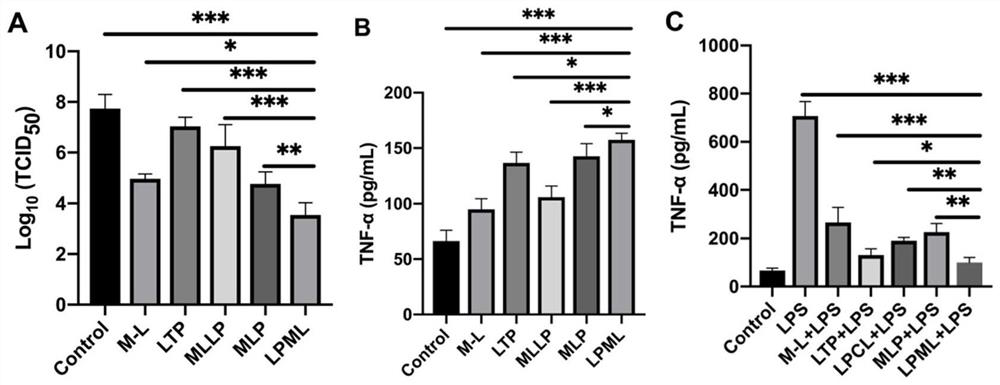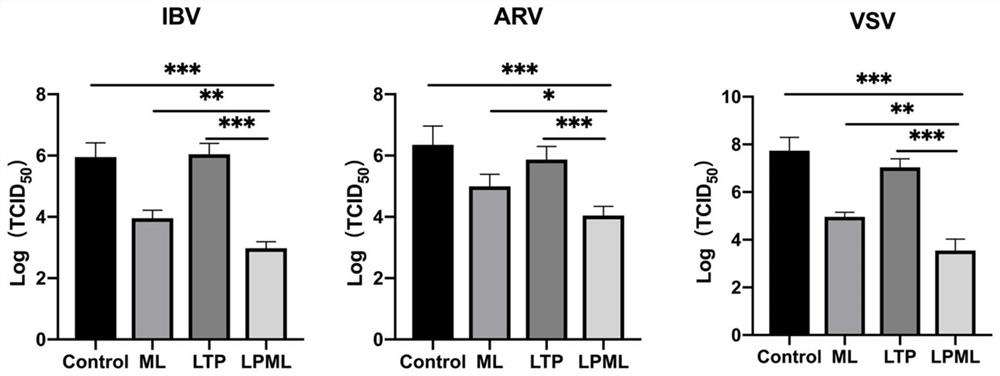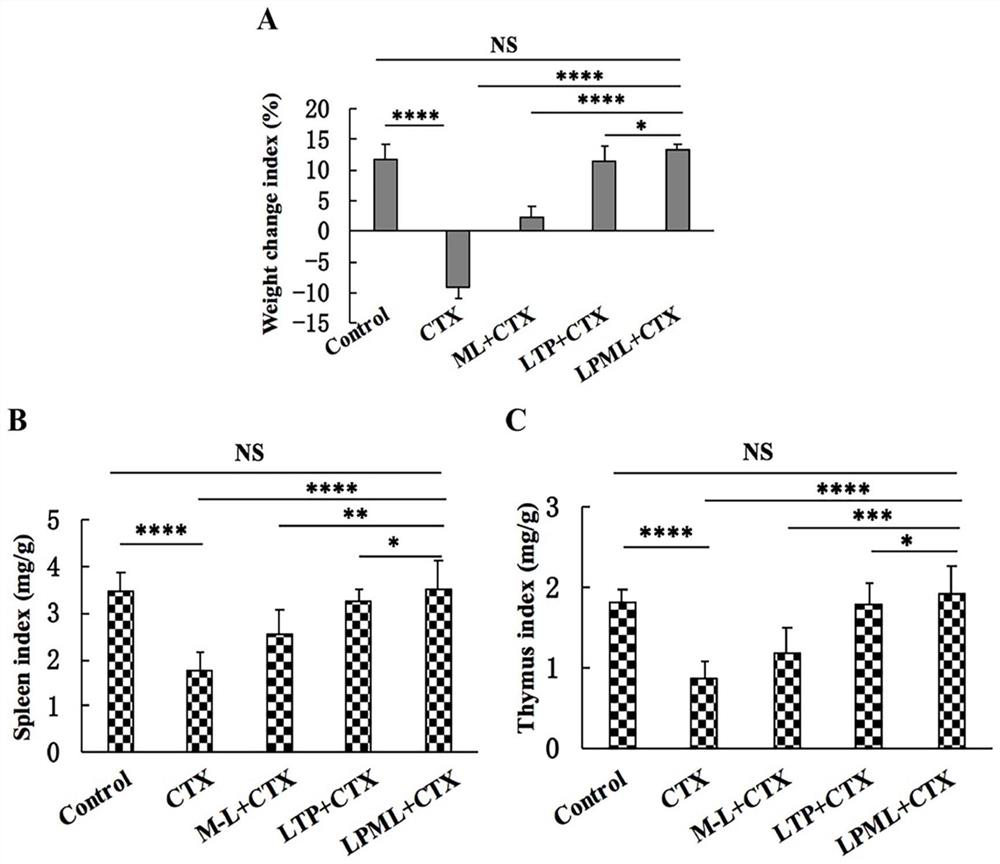A multifunctional hybrid peptide with antibacterial, antiviral, immunomodulatory and anti-inflammatory activities and its preparation method and application
A technology of immune regulation and hybrid peptide, applied in the field of protein engineering, can solve the problems of high cytotoxicity, weak anti-inflammatory ability, weak antibacterial activity, etc., and achieve the effect of low cytotoxicity, convenient preparation and low cost
- Summary
- Abstract
- Description
- Claims
- Application Information
AI Technical Summary
Problems solved by technology
Method used
Image
Examples
Embodiment 1
[0055] Example 1 Preparation of Multifunctional Hybrid Peptide LPML
[0056] By screening polypeptides with immune regulation, anti-inflammatory, antibacterial and antiviral functions, it is determined to immune anti-inflammatory polypeptide LTP (sequence shown in SEQ ID NO.1) and antibacterial and antiviral polypeptide ML (sequence shown in SEQ ID NO. 2) as the parent peptide. The sequence, structure, and relationship between sequence structure and function of LTP and ML were studied, and multiple candidate hybrid peptides were obtained by using protein molecular design technology to hybridize polypeptides LTP and ML. Among them, LPML has the best antibacterial, antiviral, immunomodulatory and anti-inflammatory activities. LPML comprises the amino acid sequence shown in SEQ ID NO.1 and the amino acid sequence shown in SEQ ID NO.2, and the specific amino acid sequence is shown in SEQ ID NO.3. In this embodiment, the hybrid peptides LPML (sequence shown in SEQ ID NO.3), MLP (...
Embodiment 2
[0059] Antibacterial effect of embodiment 2 multifunctional hybrid peptide LPML
[0060] The minimum inhibitory concentration (MIC) of multifunctional hybrid peptide LPML on E.coil CVCC 245, E.coil K88, EHECO157:H7 and Salmonella CVCC 2212 was detected by microdilution method. The results are shown in Table 2. The results showed that the multifunctional hybrid peptide LPML had good antibacterial activity against the four tested Gram-negative bacteria, and its antibacterial activity was significantly higher than that of its parent peptides LTP and ML.
[0061] The minimum inhibitory concentration (MIC) of table 2 multifunctional hybrid peptide
[0062]
Embodiment 3
[0063] Example 3 Antiviral effect of multifunctional hybrid peptide LPML
[0064] VSV, IBV, and ARV were used as indicator viruses to detect the antiviral activity of the polypeptide. The Vero cells were seeded in 96-well cell culture plates at 3×105 cells / mL, and cultured overnight in a 5% CO2 incubator at 37°C to allow the cells to adhere to the wall. Remove the cell culture medium, and inoculate the virus liquid after 10-fold gradient dilution with the culture medium containing the final concentration of 10 μg / mL polypeptide in the cell culture plate, add 100 μL to each well, inoculate 8 wells for each dilution, blank control Add 10-fold gradient dilution of virus solution to the group, and culture in a 37°C carbon dioxide incubator for 3 to 5 days until the cells have no increase in new lesion holes. Use the Reed-Muench method to calculate its influence on the virus TCID50, and the calculation formula is as follows:
[0065] lgTCID50 = difference between distance ratio x ...
PUM
 Login to View More
Login to View More Abstract
Description
Claims
Application Information
 Login to View More
Login to View More - R&D
- Intellectual Property
- Life Sciences
- Materials
- Tech Scout
- Unparalleled Data Quality
- Higher Quality Content
- 60% Fewer Hallucinations
Browse by: Latest US Patents, China's latest patents, Technical Efficacy Thesaurus, Application Domain, Technology Topic, Popular Technical Reports.
© 2025 PatSnap. All rights reserved.Legal|Privacy policy|Modern Slavery Act Transparency Statement|Sitemap|About US| Contact US: help@patsnap.com



